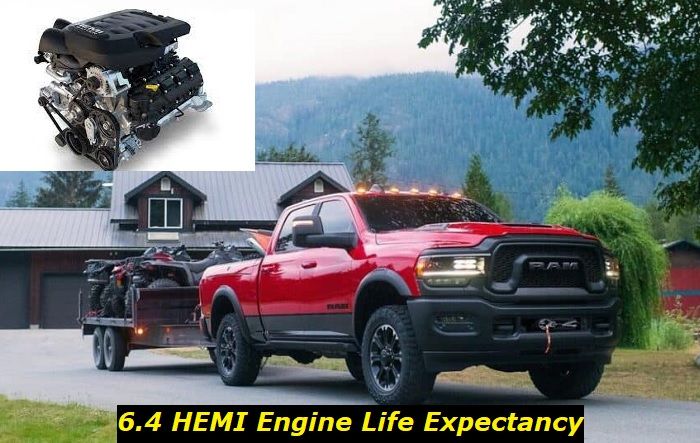The Ford 3.5 EcoBoost engine is characterized by its solid performance, frugal fuel economy, and high level of reliability. This power unit debuted in 2007 and has since then enjoyed a long production run up to this day in its second-generation series. The longevity of the engine in the market and judging how it is still being used by the ever-popular F-150 pickup truck today surely speaks a lot about its quality.
The 15 years of existence of the Ford 3.5 EcoBoost is not without its own set of problems though. One of the recurring problems of vehicles equipped with it is related to its weep hole located in the water pump area. This is seldom tackled when talking about the common issues of the Ford 3.5 but is equally as important as the other crucial components of vehicles mainly because the failure of this minor component to function as intended could bring about a more complex problem for your auto.
.jpg)
Likewise, the deposits in that area are indicative of developing issues that you don't normally notice until they get blown out of proportion.
What is a Weep Hole?
Generally speaking, a weep hole is any small opening that allows water or other fluids to escape. The positioning of these holes usually varies depending on the overall design of the vehicle but they are normally placed where liquid that has either seeped through some of the gaps of the vehicle or expelled by some parts of it tends to accumulate or settle over time.
The Ford 3.5 has many weep holes strategically placed all over the vehicle to act as drainage. One of them is found below the water pump in the engine bay where there is potential for fluid to build up or seep through some of the little openings of the other moving parts of the vehicle.
Weep holes are essential because they help prevent liquids like water, oil, and coolant from amassing in a specific area and causing problems such as leaks, rust, or other damage. While most vehicles come with factory-configured weep holes with different orientations, it is possible for them to develop problems along the way.
Main Function of the Water Pump's Weep Hole
The weep hole below the water pump is a special one because it prevents the lubricant expelled by the pump bearings from flowing over the water pump housing. It also lets the coolant ejected by the pump housing to properly drain. Likewise, the weep hole serves to warn you right away about imminent problems or issues that are just starting to manifest, which are usually related to the sealants of your pump or oil seals.
Clogged Weep Hole
The weep hole located at the bottom of the water pump tends to become blocked over time. This is the most common problem encountered by this portion of the auto as it can occur anytime when dirt, debris, or other materials are collected in the openings. When this happens, it is important to clean the weep holes to ensure that they remain clear and functional.
It should be noted these holes are sometimes intentionally sealed shut or blocked by owners because they mistake them as a flaw in the design of the water pump. There have been instances where buyers of used trucks have complained about these incidents stemming from their vehicles' previous ownerships.
Regardless of the reason, if you find that the weep hole at the bottom of your water pump is clogged, it can cause numerous problems to your engine and water pump later on. A blocked weep hole won't be able to drain the oil droplets coming from the engine effectively. As the oil accumulates over time without proper drainage, there's a possibility that it might spill over to the coolant. Similarly, if the coolant droplets accrue because the liquid can't drain well, the fluid might flow over to the engine oil.
The mixture of the oil and coolant produces a slimy substance that can deteriorate your water pump and engine quality quickly. The development of sludge in the water pump will prevent it from continually circulating the coolant from the radiator to the engine block. Such a scenario would lead to overheating and eventual loss of engine power depending on the gravity of the contamination.
On the other hand, the same slimy mixture can hamper the delivery of oil through the engine. Without the right lubrication, the resulting friction between the moving parts of the engine can deteriorate the power unit's quality quickly. Again, this can cause overheating and loss of engine function if ignored.
Therefore, to clean the weep hole, you'll need a small brush, a wire, and some clean water. Start by removing any debris or dirt that may be clogging the hole. Then, using the brush, gently scrub away any build-up around the hole. Use the wire to carefully poke at the deep hard-to-reach areas of the weep hole. Rinse the area sparingly with clean water, and dry it off with a cloth.
Along the way, you might notice that there will be traces of coolant or oil in there. Droplets of these substances are just normal but if the amount is significantly higher than usual, these could be an indication of bigger problems which we will discuss in the next section.
Diagnosing Leaks Using the Weep Hole
The water pump of vehicles carrying the Ford 3.5 engine has both oil and coolant seals. This is due to the pump requiring engine oil lubrication in both its gear drive and bearing. In between those seals is a weep hole.
As mentioned earlier, it's just normal to see droplets of oil or coolant in that part. However, if there is a significant increase in the amount of oil or coolant seeping through the weep hole, don't panic just yet because there are ways to remedy the situation.
- Water Pump Sealant Damage
A substantial amount of coolant leaking through the weep hole is a sign that your water pump sealant may have been compromised. If you are experiencing this, there are a few things you can do to fix it. First, you'll need to remove the old sealant from the area around the leak. This can be done with a putty knife or a similar tool. Once the old sealant is removed, you'll need to clean the area around the leak thoroughly. This can be done with a mild scraper like a putty knife and a soft cloth.
Once the area is clean, you'll need to apply a new sealant to the area around the leak. There are many different types of sealants available, so be sure to choose one that is compatible with your vehicle. Once the new sealant is in place, you'll need to let it dry for the amount of time recommended by the manufacturer.
After the sealant has dried, you'll need to observe the area that you just fixed for any more leaks. If there are still leaks present there, you may need to apply additional sealant or replace the gasket entirely if it's already blown up. Be sure to follow all instructions carefully to avoid damaging your vehicle.
- Engine Oil Sealant Damage
Meanwhile, if your weep hole is draining a significant amount of oil, you may be looking at an oil seal problem. It is not uncommon for oil sealant to break down over time, especially in high-heat environments like the engine bay of a truck. If you find that your oil sealant has broken down and is no longer effective, there are some steps you can take to fix it.
First, you will need to remove all traces of the old sealant from the engine bay. This can be done again with a putty knife or other similar tool. Once the old sealant is removed, you will need to clean the area thoroughly with a degreaser or other cleaning solution.
Next, you will need to apply a new sealant to the area. There are many different types of sealant available, so make sure to choose one that is compatible with your engine bay. Once the new sealant is in place, you will need to allow it to cure for the amount of time specified by the manufacturer.
After the sealant has cured, you should start your truck's engine and allow it to run for a few minutes. This will help spread the sealant evenly across the engine bay. Once the engine is turned off, you can then replace the oil and filter as usual.
Conclusion
The weep hole below the water pump of a Ford 3.5-engined truck is typically one of the most overlooked areas because there remains a significant number of owners who don't really understand its significance in the overall design of their autos. This is the reason why some of them even mistake it as a design flaw and they end up putting a screw or a sealant there.
So, we hope we have shed some light on the importance of such a minuscule hole beneath the water pump of your truck. As explained here, the weep hole serves both as an indicator of sealant issues plus as a drainage for excess coolant and oil. With that, you should ensure that it is free from obstruction and do check it once in a while for red flags that could point to certain coolant and oil problems.
About the authors
The CarAraC research team is composed of seasoned auto mechanics and automotive industry professionals, including individuals with advanced degrees and certifications in their field. Our team members boast prestigious credentials, reflecting their extensive knowledge and skills. These qualifications include: IMI: Institute of the Motor Industry, ASE-Certified Master Automobile Technicians; Coventry University, Graduate of MA in Automotive Journalism; Politecnico di Torino, Italy, MS Automotive Engineering; Ss. Cyril and Methodius University in Skopje, Mechanical University in Skopje; TOC Automotive College; DHA Suffa University, Department of Mechanical Engineering






Add comment